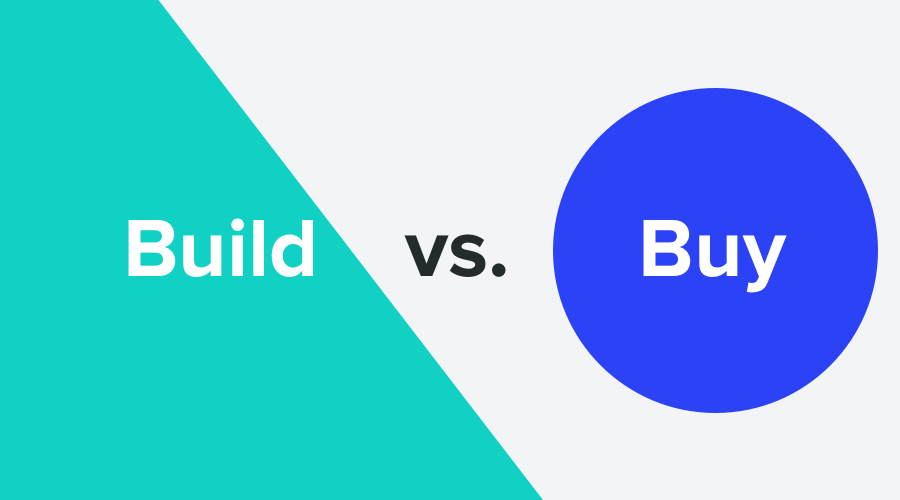Build vs. Buy

A strategic framework for deciding when to build or buy a customer engagement platform for either push notifications, email, SMS messages, contextual content, or mobile wallet features.

A common question among organizations, large and small, when looking for a software solution for a marketing or service matter, is developing it yourself or integrating an existing tool. Although you often come across the case of buying versus building, you don't always have the right assessment criteria at hand. Especially now that technological change is accelerating, it is vital to make a careful evaluation, focused on the short but also the long term.
Sometimes it makes sense for your company to build your own solution; here's a five step framework to assess whether building or buying is a better option for your business.
Build vs. Buy a strategic framework
Costs
In your consideration of buy versus build, you often look at the cost first. When buying, it's often obvious. When paying a monthly fee, of a SaaS solution, the costs are transparent. With Notificare, the plans are set up so they can grow with the success of the organization. An additional advantage is that there are no setup costs, so you only pay monthly for usage. The costs of the build option, however, are a bit harder to determine.
First of all, you have the actual build costs. Your engineering team or development team needs to be set up with the different disciplines. Backend, frontend, and of course, the mobile team that will build iOS and Android applications. Also, the interface that the marketer is going to work with has to be built. And let's not forget the frontend-integration of the website or app. It has to look good and provide a great user experience, which means UX-development and design.
After the custom solution is built, the costs of QA and maintenance performed by DevOps will follow. The software needs to be hosted somewhere, obviously in a scalable way that matches the organization's needs. If you have to set this up for your custom solution, you will run into inefficiency costs.
And finally, there will always be new development costs. For new features or for opportunities to respond to market developments.Features
The second major point is to determine the necessary features. When you focus on a specific use case and know that this is also what you need in the medium and longer-term, building this specific solution is often the best option. But in most cases, you want to start simple and focused and, along the way, explore features that have been thought through and are in use by multiple customers. In this way, your organization can keep up with market developments and stay ahead of the competition. Also, you often don't know exactly what you need and only find out when you actively collect data and act on it.Scalability
Scalability is a requirement that, in many cases, will only come into play in the medium and long-term. When your website visitors, app users, or email subscriptions grow to hundreds of thousands or even millions, the platform needs to scale accordingly. The collection of the events, the messaging campaigns, the hosting of the content, everything has to be prepared for the heavy load of growth.Flexibility
You don't always know in advance what you will need in a few months. Whether you build it yourself or purchase a SaaS solution, ultimately what you are looking for must be flexible enough to move with the changing demand, market development, and organizational requirements. When building a custom solution, this is often more difficult. When buying a solution, it's very common to feel that you are buying more features than you need, but before you know it, you will take advantage of it and benefit from choosing proven technology.Privacy and Security
The advantage of a buy solution is that you can test the privacy and security issues adequately. You don't have to figure this out overnight. You can rely on years of experience and external security audits required by certifications. Also, complex processes such as data processing and retention are already taken care of in platforms like Notificare.
In conclusion, the winner is...
As mentioned, the decision between buy or build is a classic one. But when looking at a Customer Engagement Platform, there are very few reasons for an organization to choose to build their custom solution. You only see organizations choosing this when it becomes the core of their business. In all other cases, you are better off with the buy option; a platform like Notificare can offer much more and is regularly chosen over a custom solution.
If you are struggling with this subject and would like to exchange your opinion with a product architect who can help you justify your organization's decision, please contact our Professional Services.
